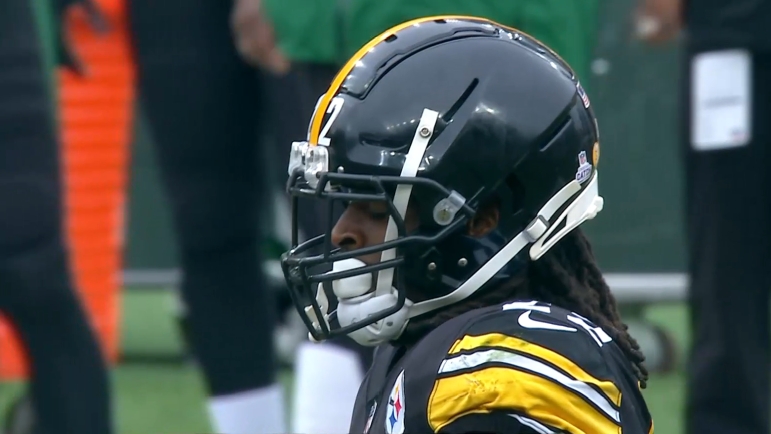If you know Pro Football Focus, you know they don’t like valuing running backs. Fungible, replaceable types that shouldn’t come at a high cost financially or with draft capital. So when it comes to listing each team’s biggest draft mistake of the last five years, they’re bringing the hammer when it comes to the Pittsburgh Steelers drafting Najee Harris 24th overall in the 2021 NFL Draft.
PFF’s Mike Renner named drafting Harris the team’s biggest draft mistake of the last five years, spinning the selection as the wrong way of building out a running game.
“The Steelers learned their lesson about putting the cart before the horse when it comes to productivity running the football in the NFL. Coming into 2021 with one of the worst offensive lines in the league, they drafted Najee Harris at Pick No. 24 to improve their running game after the Le’Veon Bell saga. That hasn’t come to fruition. Harris has averaged 3.8 yards per carry in two seasons.”
(Fun fact: the wrong Najee Harris is linked in that above blurb)
I’m sure he’d argue his point is a little more layered than “drafting Najee Harris was bad,” though the site undoubtedly is anti-taking running backs in the first round. And his point has a kernel of truth. There’s value in building teams inside-out, starting with the trenches and having a strong offensive line that’ll make any running back look better. But it’s not as if the Steelers passed on a great offensive lineman to take Harris. Sitting at #24, all the top linemen were off the board including with the 23rd pick when the Minnesota Vikings cashed in on OT Christian Darrisaw. The next offensive lineman didn’t come off the board until #37 when the Philadelphia Eagles took Landon Dickerson, a solid prospect but one who had plenty of medical red flags coming out.
Though his yards per carry haven’t been great, Harris has put together two solid seasons and the run game perked up in the second half of 2022 once he got past a summer foot injury and the Steelers’ o-line began gelling. No team ran the ball as much as Pittsburgh did the second half of the season and while they were far from the league’s most efficient offense, they controlled the clock and kept scores down, leading to a 7-2 finish. Before the bye, Harris averaged only 3.3 YPC. After it, he averaged 4.1.
Harris’ selection can still be argued and debated and I write all this as the man who wanted Oklahoma center Creed Humphrey at #24. But his selection is easily better than the team trading up for ILB Devin Bush in 2019, moving from #20 to #10, or the team drafting Kendrick Green in the third round of the 2021 NFL Draft, shoehorning him as a Day One ready center despite being riddled with technical flaws and having played more guard than center in college. It was a woefully poor evaluation by the team.
Bush never panned out the way the team hoped and set them back at the position. They declined his fifth-year option last offseason and he’ll hit free agency next month, almost certain to go to another team. Green had one disastrous year as a starter and didn’t play a single offensive snap in 2022. He’ll enter this summer with less than a 50% chance of making the final roster.
At the least, Harris is a solid player. That’s more than what a lot of teams with first-round picks can say. Even if the value is questionable, drafting good and talented players means you’re doing better than 60% of the rest of the league. The Steelers got more out of Harris at #24 than the Jets did with QB Zach Wilson, the 49ers have with QB Trey Lance, the Raiders did with OT Alex Leatherwood, the Giants did with WR Kadarius Toney…you get the idea.
However, it’s worth noting the drought Pittsburgh has had along the offensive line. They haven’t used a first or second-round pick on the position since 2012 when they drafted OG David DeCastro and OT Mike Adams with their first two picks. We’ll see if that changes this year or if the team keeps its 2022 starting five intact.








